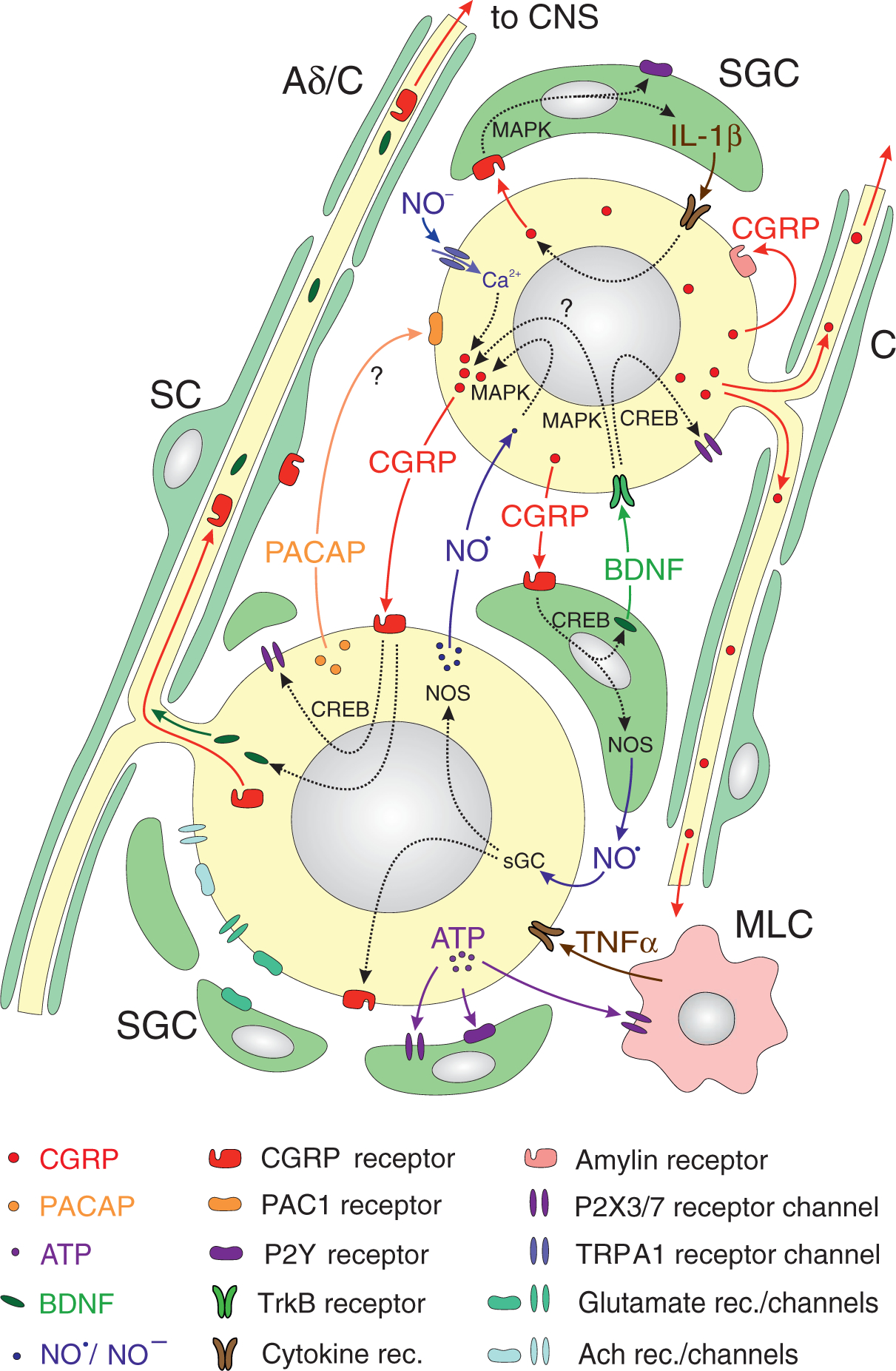Figure 2.

Representation of receptor expression and signaling processes in and between trigeminal ganglion cells. Coloured arrows denote diffusing or transported signal molecules or receptor proteins, inflected broken arrows through the nucleus indicate gene expression. Small neurons (mostly with unmyelinated fibers, right hand, C) expressing CGRP may signal to satellite glial cells (SGCs) and to middle-sized neurons (typically with myelinated, rarely unmyelinated fibers, left hand, Aδ/C) expressing CGRP receptors (144). CGRP release by Ca2+-dependent exocytosis can be induced by activating Ca2+-conducting ion channels like TRPA1, for example by nitroxyl (NO−) (117). Autocrine activation by CGRP may occur via CGRP-binding amylin receptors (49). CGRP and amylin receptors may activate intracellular cascades involving cAMP response-element binding protein (CREB) or mitogen-activated protein kinase (MAPK) to induce gene expression of purinergic (P2X3) receptor channels in neurons (145) and P2X7 channels (107) as well as purinergic (P2Y) receptors in SGCs (146), enzymes like nitric oxide synthase (NOS) (105), cytokines like interleukin 1β (IL-1β) (106) as well as growth factors like brain-derived neurotrophic factor (BDNF) (109). Nitric oxide (NO), cytokines and BDNF may signal back to neurons facilitating expression of purinergic receptor channels (145), CGRP (147) and CGRP receptor components like RAMP1 (118). In addition, ATP, possibly released from neurons under the influence of CGRP (108), may activate SGCs (148) and macrophage-like cells (MLC), which can signal back to neurons by cytokines like tumor necrosis factor (TNFα). Other neuropeptides like PACAP may also be involved in intercellular signaling (54). Many of the gene products like CGRP, CGRP receptor proteins and BDNF can crucially influence neuronal transduction and synaptic transmission, because they are delivered by axonal transport through the neuronal processes (surrounded by Schwann cells, SC) to the peripheral and/or central terminals of trigeminal afferents.
